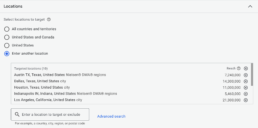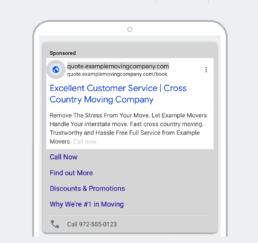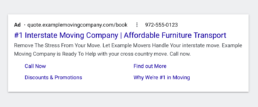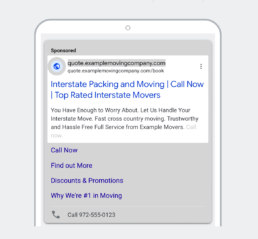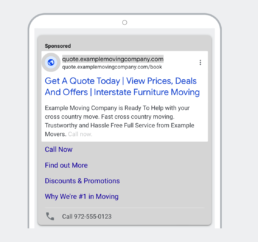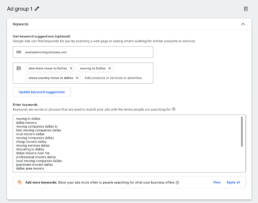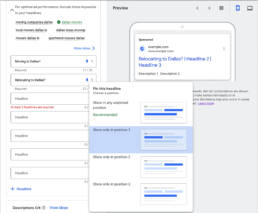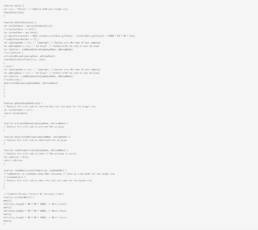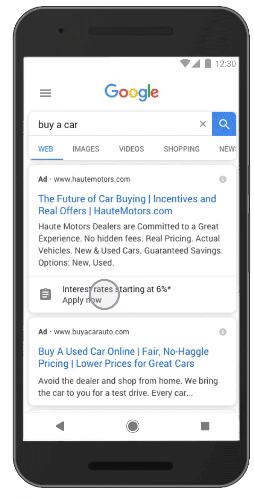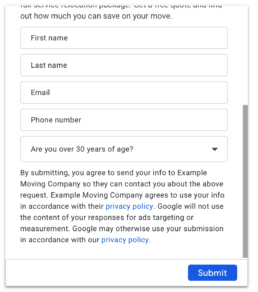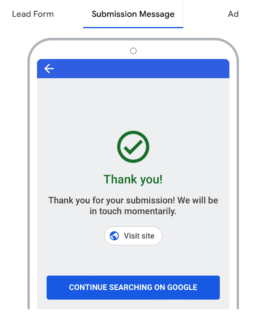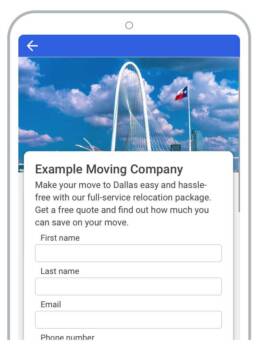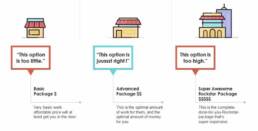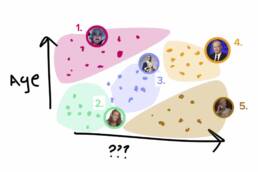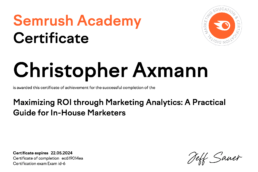Overview
Imagine you were operating a moving company based in Los Angeles, but someone in New York City wanted to relocate to Dallas. You’re going to waste a lot of money on gas while your empty trucks drive across the country to pack up the home. Then, when the job is finished, you’ll waste even more money driving back to Los Angeles – but your next customer might call from New York, forcing you to once again move your trucks back cross the country.
Luckily, if you’re in the business of coordinating interstate moves, you’re going to benefit from network effects as you add trucks to your fleet – but the same problem exists on a smaller scale each time you coordinate a full-service move from a destination in one city, and upon completion, the next available customer is hundreds of miles away.
You analyze the profitability of moves in and out of 10 cities using a dataset of full-service moves across state lines. Your analysis leads you to the conclusion that these 10 cities are your most profitable cities to do business. You decide to capitalize on your company’s ability to coordinate the arrival of moving trucks in those cities with other moves scheduled days later because it saves your company thousands of dollars by reducing gasoline costs, reducing wages paid to idle moving teams, and avoiding unnecessary capital depreciation each time you relocate an unencumbered truck in your fleet.
How might you generate more qualified leads to these cities and from those cities to take advantage of the situation? The natural place to start would be to create a campaign through Google Ads to capture qualified leads that match this description. After you get a campaign running, you can test the results, and after optimizing your campaign settings, you can automate your promotional offers based on the customers who are most likely to generate profit for the firm. We’ll do this by starting broad and achieving proof of concept before investing time and resources into implementing a more sophisticated strategy that relies on data from the business’ CRM software to geographically segment customers into ad groups based on other orders.
For our initial campaign, we’re going to focus on search ads because these customers are reliably high intent. Later, we’ll implement a system to target customers by their city of origin with separate ad groups within each campaign.
Targeting by Location
At this stage, our primary focus is collecting more data on customers that originate in the 10 cities we identified as most profitable for long distance moves.
The city of origin would be set here, in the location setting.
It’s worth mentioning that we would most likely target a broader area than just the city proper, but this will depend on detailed information about how proximity impacts the potential cost savings of this campaign.
With that in mind, we’ll enter multiple headlines and descriptions in a responsive search ad so Google Ads can automatically learn which combinations perform best across all of the traffic provided by broad match. Google Ads Manager will automatically recommend some keywords based on the information you provide, but for a more complete understanding of how competitors are approaching their keyword strategy, it’s worth spending time on SEMRush to get a more complete picture. We’ll study relevant competitor ads and optimize our ads accordingly.
This moving company has clearly identified a campaign strategy that works for them, so we’ll use some some of their headlines in our own ads. These are some generic examples of ads that are likely to perform well.
The problem is that these ads don’t effectively target the specific customer we’re trying to reach. We want to appeal to customers based on what they are looking for. That is why we are creating distinct ad groups within this campaign – each ad group represents a different customer based on their goal: a move to a specific city.
Here, we focused on search terms related to destination. It’s important to spend time analyzing Google Search trends prior to choosing your keywords, but we’re skipping that process for now. Just remember that this campaign is reach new customers moving to the Dallas area, and choose accordingly.
For the first ad group, we’re going to choose headlines that focus on our customer’s goal of moving to Dallas, and pin those specific headlines to the first position. For the other two headlines, we’ll borrow effective headlines from our generic search ad example.
Promotions / Discounts
The next important aspect of our campaign is the promotional offer. Due to the centralized structure of our moving business, we hypothesized that coordinating full-service moves between states could be highly profitable due to synergies that competitors, mostly running decentralized offices run by individual franchise owners, can’t benefit from. To make sure that we capture these high value leads, we might want to offer customers a discount to attract them to our service and close the deal. Further analysis would help us come to conclusions about how to offer these discounts, but let’s say that you decide to offer $200 discounts of moves to specific locations, or 20% off full-service moves.
Automation
After you implement similar settings for each of the 10 ad groups, each representing a different city, you can start to collect data and optimize the performance of the campaign. During this phase, we just need to first confirm that our strategy is viable by collecting more data. We are not going to focus on automatically targeting specific cities of origin based on destination data from our CRM yet because it’s possible, if not likely, that ad group segmentation would prove less effective than Google’s automated solutions. This is an example from Google’s guide to search automation:
Example: Let’s say you manage an Italian restaurant in San Francisco. Broad match can help you find a variety of interested people—from a couple searching “places to eat tonight” on their phones nearby, to a family searching “family friendly restaurants in SF”, to a traveler searching “best risotto in North Beach” on their laptop in their hotel. While any of these users could visit your restaurant, the optimal bid to reach them will vary. Manually adjusting the bid on individual keywords for each user is extremely difficult and would lead to missed conversions.
Taking this a step further, it would be impractical to create thousands of creatives for every possible search provided by broad match. Creative automation works with broad match because the system needs flexibility to optimize the right creative variant to each query. By entering multiple headlines and descriptions in a responsive search ad, Google Ads can automatically learn which combinations perform best across all of the traffic provided by broad match.
This type of automation doesn’t use signals from our company’s first party sales data, so it might not be true in our case. For that reason, you might use this first phase to confidently determine that an expanded strategy would lead to the savings we hypothesized earlier. In that case, we would create 10 separate campaigns, each targeting a city of origin. For each campaign, there would be 9 ad groups, one for each of the other 10 cities. We can create a unique UTM identifier for each destination city to track and evaluate the performance of the strategy across campaigns. My main concern with the viability of such a strategy is a lack of sufficient data due to the relative infrequency of long-distance moves.
Google Ads API / Google Ads Scripts
You can use Google Ads API or Google Ads scripts to execute an automated strategy that uses CRM data to activate ad groups based on your sales data. The precise script we write will depend on the software that the company’s sales team uses for CRM and how the software logs sales information for destinations. The three most important datapoints we’ll need to implement the strategy effectively will be some type of unique order ID, the date that the interstate move is scheduled to be complete, and the destination city for the move. This is because we will write a script to periodically check the company’s sale data to see if a move is scheduled to that city. I’m not going to elaborate on the details, but any popular CRM software will be capable of providing that data to Google Ads. I don’t specialize in scripts like this, but I used ChatGPT to approximate the logic. If somebody reads this and wants to offer their corrections, please email me at [email protected]. I’d love to get the input, because this is not my specialty.
Google Native Forms
There are two more considerations I’d like to elaborate on, both related to Google’s Native Lead Generation Form. Mobile users account for approximately 59.6% of web traffic worldwide, and it’s nearly impossible to match the conversion rates of native forms for customers using a mobile device. One of the best features of these forms is that they automatically fill in customer information if they are logged in, making it easier for customers to submit the form without typing.
Last, we should consider if it’s possible to remove even more friction by only asking for the customer’s zip code on these lead forms. We already know that these ads will only appear for customers who are searching from the general area(s) that we chose to geographically targeted earlier, and we also know the general area that they are looking to move to – is it possible to offer a preliminary quote based on that knowledge alone? Perhaps not – but it’s worth considering.
If your company can confidently generate a quote based on this information, that might dramatically improve the conversion rate for these Google lead submissions. Meanwhile, for those who take the step of clicking on your website, you can ask for more detailed information without as much concern for the customer abandoning the process. For those customers, it’s critical to get information like the number of rooms in their home, or their full address. For customers using the native search form, it’s possible that they are more sensitive to those extra steps that would take more time.
If a zip code can give the sales team enough information to provide a customer with some idea of how expensive it would be to move from their area, you might turn more of those potential customers into leads, particularly for those searching on a mobile device. Perhaps when customers use the Google Native Form, the first email that the customer automatically receives could price the quote in 3 tiers based on the amount of rooms in the home/apartment. This pricing strategy is typically very effective, but it’s hard to know if this is worth implementing without more information. Would a simplified process reduce the average quality of those leads? It’s difficult to say without first collecting data by experimenting!
This initial campaign would also be a good starting place for an expanded strategy with placements outside of just search. For example, you might want to consider retargeting these customers with display ads that focus on Dallas, or with ads on YouTube that highlight all the benefits of using your company for a full-service move, highlighting the care and attention to detail.
It’s always best to start by collecting more relevant data you can use to make confident decisions. This will give you a clearer view on the potential value of generating leads through Google Ads so you can determine the best possible strategic approach for your business.
Key Takeaways
Regardless of how effective this particular strategy proves to be, it’s critical to remember these 3 points to develop an effective Google Advertising strategy:
- Experiment as much as possible, particularly when your strategy can’t be copied by competitors. I laid out this thought experiment primarily due to a possible competitive advantage – the centralized operational structure of the business. If an experiment like this leads to profitable orders, and your competitors can’t profitably match the promotional discounts you offer, it’s going to be difficult for them to copy your approach. Google will recognize that your ads receive more attention from customers, and conclude that your ad is higher quality. Google uses ad quality to evaluate when an ad is most likely to benefit a customer when they search. As a result, you won’t have to set your bids as high win each auction.
- Make decisions based on data. This is why it is so important to experiment: these experiments help you collect data you can use to get clarity on your perceived advantages as a business.
- When a strategy is successful, invest time and effort into maximizing that advantage. I used SEMRush to research a competitor, and found that they frequently used the phrase “Remove Stress from your Move.” This is an example of a company that found an effective strategy that worked for them and chose to double down. An experiment like the one I describe here is a chance to discover a similar strategy that could yield similar results.



